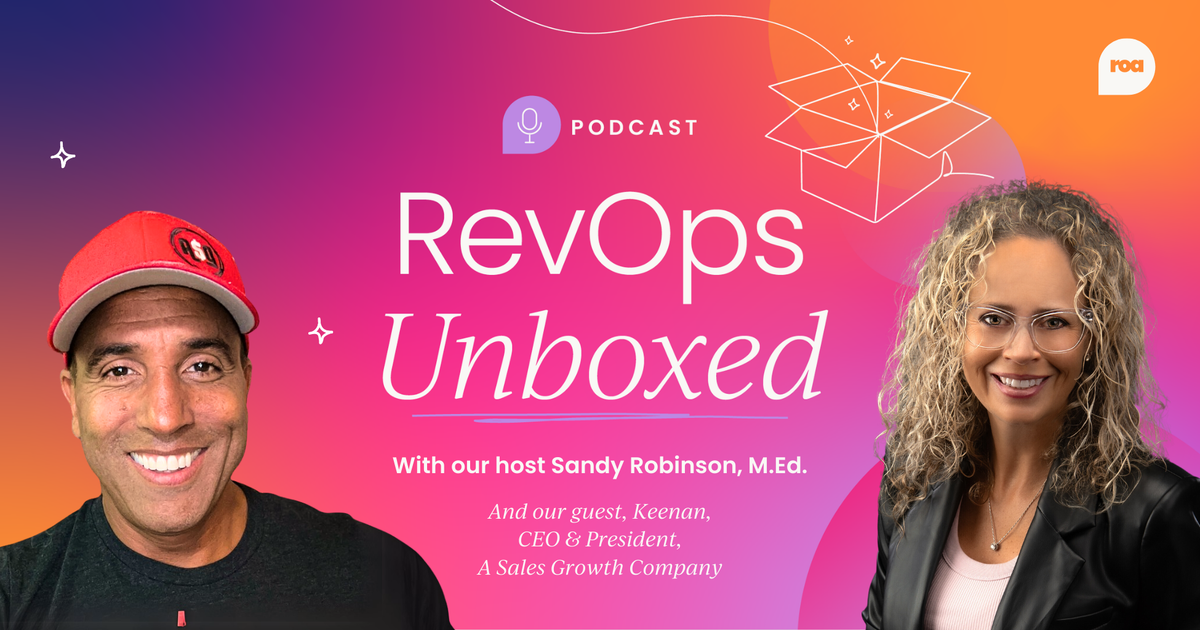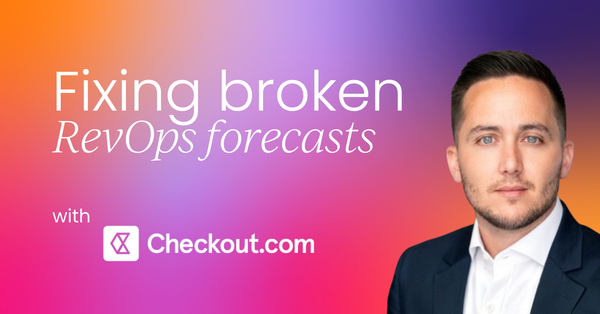Have you ever spent half your month trying to predict the numbers – and the other half explaining why you missed them?
If you work in revenue operations, you probably know that feeling all too well. I certainly do.
But here’s the truth – forecasting doesn’t have to be this painful. The constant scrambles before a board meeting, the back-and-forth between sales and finance, the quiet panic when leadership starts to lose confidence in your numbers – all of that is fixable.
In my time leading revenue operations at Checkout.com, I’ve learned that broken forecasts usually stem from just three problems:
- Data integrity gaps that distort the truth.
- Siloed accountability that keeps teams out of sync.
- Static modeling that fails to adapt to reality.
So in this article, I’ll share how we rebuilt our forecasting process from the ground up – turning confusion into clarity, and accountability into accuracy.
Let’s get started.
Crafting a solid data foundation
Everything starts with your data. When I first joined Checkout.com, we didn’t even have a consistent sales process or defined deal stages. Each rep had their own idea of what “commit” meant. One person’s “late stage” was another person’s “early pipeline.” It was chaos.
So we rebuilt it from the ground up. We introduced clear stage gating – firm criteria for what moves a deal from one stage to the next. No more “I think this one’s about to close.” You have to prove it with the right paperwork, approvals, and engagement signals.
When your staging is standardized, your data suddenly becomes useful. You know what’s real, what’s probable, and what’s pure optimism.
We also elevated the data by making it visible and actionable. The principle is this: your data should show activity, not just numbers. Those signals are objective. They tell you a story that gut feeling can’t.
Deals with active engagement progress faster. Deals that go quiet usually stall.
One of my favorite tools we built internally is our “clean your room” dashboard. It’s exactly what it sounds like – a hygiene check on your pipeline.
- Which deals haven’t been updated?
- Which have no next step?
- Which look too good to be true?
That objective lens helps us spot risk early and keeps our reps honest. If you don’t have something similar, build one. You’ll thank yourself next quarter.

Driving ownership and accountability
Forecast accuracy isn’t just about data – it’s about people.
When I arrived at Checkout.com, our leaders came from very different backgrounds. Some had been top sales reps promoted internally. Others had run big teams at major payment firms. And they all used different definitions of key terms.
So when we’d sit in a forecast meeting and someone said “commit,” it meant five different things to five different people. That’s a recipe for confusion.
We had to go through a full education cycle across every level of the go-to-market organization to make sure everyone used the same vocabulary. That uniformity created true ownership. Once everyone was speaking the same language, they could actually be held accountable for what they were forecasting.
We also made forecasting a cross-functional exercise. Too many companies treat it as a sales-only function. But revenue doesn’t live in a silo. Our marketing team, product marketers, and solutions engineers all have valuable context that influences how deals move. When they’re part of the forecasting conversation, you get a more holistic picture – and stronger alignment.
And then there’s communication. You can’t overdo it. I like to joke that in RevOps, you have to “communicate, then communicate again, and then communicate that you already communicated.”
Lastly, accountability works best when it’s incentivized. This year, we tied a portion of our VPs’ bonuses directly to forecast accuracy. There was initial resistance, but the impact has been dramatic. Now they’re asking us to extend that metric to their sales directors next year. Sometimes, a small incentive nudge can change behavior faster than a dozen alignment workshops.



 7 min read
7 min read
 Follow us on LinkedIn
Follow us on LinkedIn





